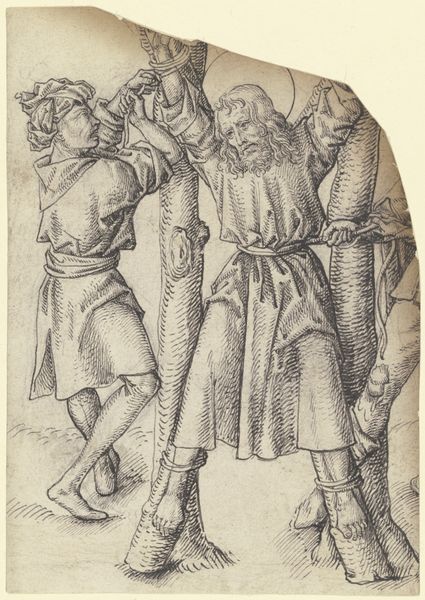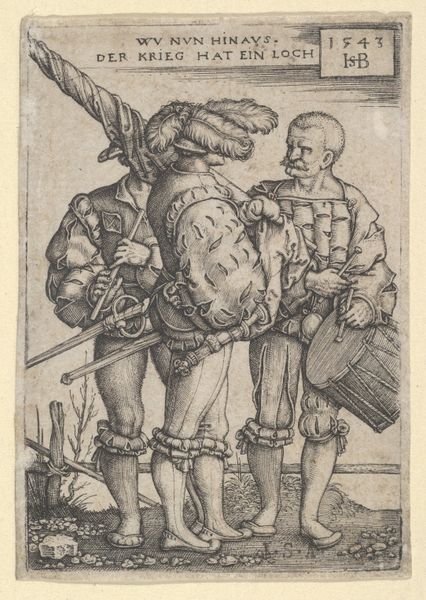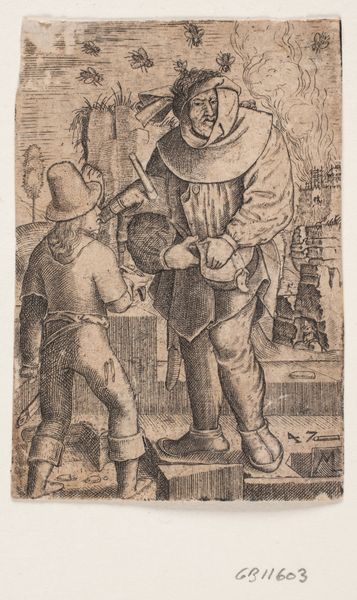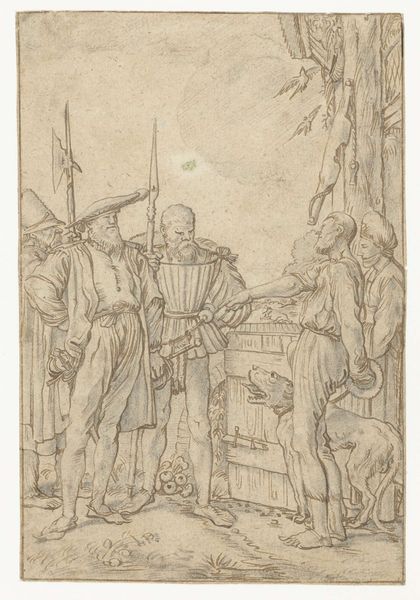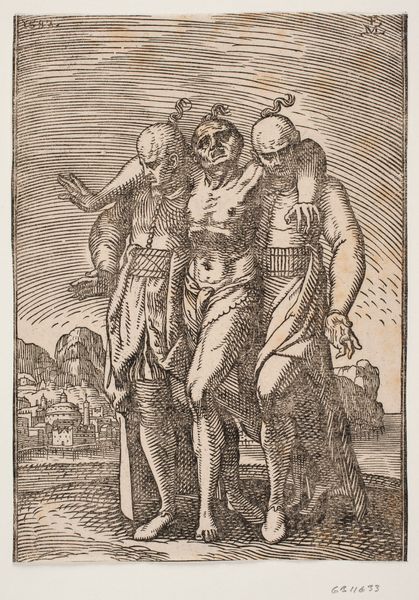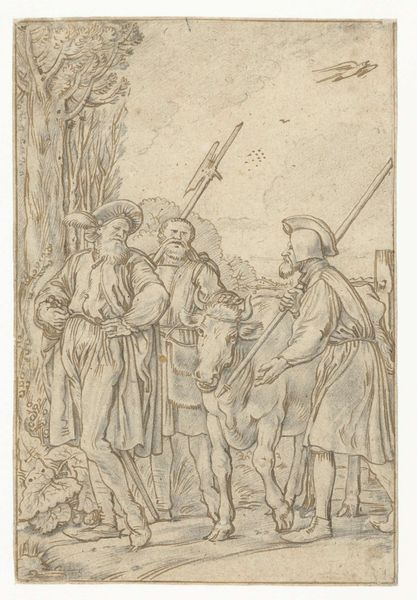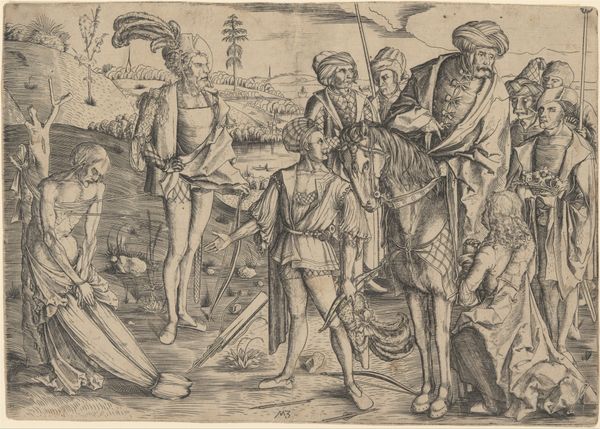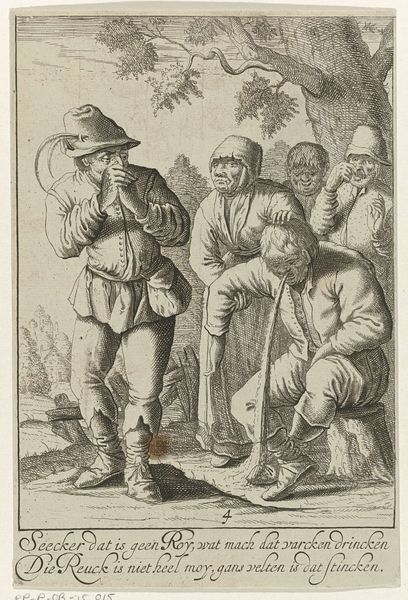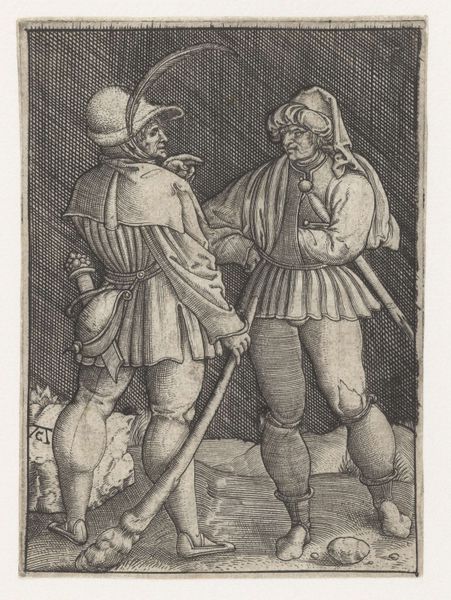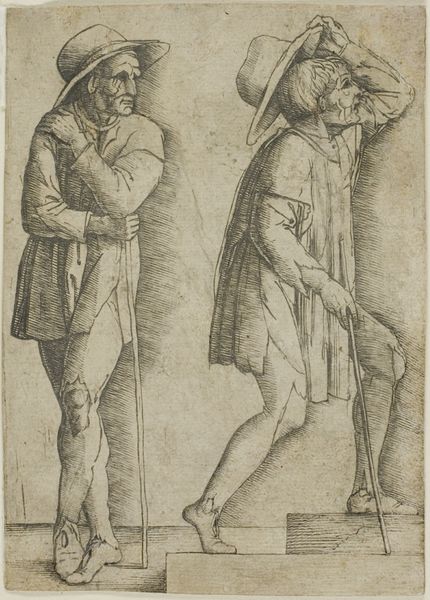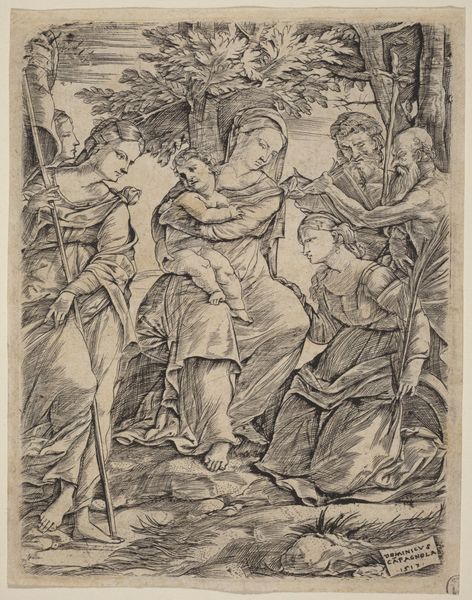
Three Peasants in Conversation (reverse copy) 1485 - 1761
0:00
0:00
drawing, print
#
drawing
#
comic strip sketch
#
imaginative character sketch
#
quirky sketch
# print
#
sketch book
#
personal sketchbook
#
idea generation sketch
#
sketchwork
#
men
#
sketchbook drawing
#
storyboard and sketchbook work
#
sketchbook art
#
sword
Dimensions: Sheet: 4 1/2 × 3 1/4 in. (11.5 × 8.2 cm)
Copyright: Public Domain
Curator: Take a look at "Three Peasants in Conversation," a print that the Metropolitan Museum attributes to Albrecht Dürer, dating sometime between 1485 and 1761. What are your immediate thoughts? Editor: Intriguing! The composition immediately grabs you with its slightly awkward but undeniably compelling rendering. The textures created through hatching are quite pronounced; it lends the figures a certain earthiness. Curator: Precisely. Consider the etching technique, the layering of lines to suggest form and shadow. These weren't just any lines; they were the result of labor. Printmaking was hard work. This print also exists as a reverse copy indicating something of its circulation and distribution at the time. It shows a culture of copying already underway which influenced modes of consumption and ideas about value. Editor: Indeed. Focusing on the purely formal aspects, notice how Dürer directs the eye. The faces, especially the central figure’s gaze, pull you right in. There's also a rhythmic interplay in the lines that structure their clothing. That use of linear elements to generate these forms produces very satisfying, tangible results. Curator: Right, and thinking about their clothing and possessions – a basket filled, perhaps, with produce, or the sword carried by the central figure. These material details offer glimpses into the social fabric of the time. Were they really peasants? Were they mercenaries? And who produced these garments, and with what resources? The "conversation" extends to their attire, prompting questions about class and role within the world around them. Editor: True, yet their postures seem almost caricatured—their gestures emphasized to comedic effect. And I keep returning to those stark contrasts! Look how his face is modeled with just ink on paper – how potent that simplicity can be! There's a philosophical dimension to this artwork as well: exploring appearance, identity, and how minimal representation can evoke maximal feeling. Curator: Perhaps Dürer sought to elevate the everyday by meticulously crafting an image accessible to a broad populace. It democratized art-making by using affordable media and it gives those otherwise ignored populations dignity in art. This work provides value for a wider consumer class than perhaps was happening before. Editor: Definitely. Whether viewing them as representations or focusing on purely formal qualities of line and contrast, this “conversation” between Dürer’s forms continues to spark interpretive conversation among us all, centuries later.
Comments
No comments
Be the first to comment and join the conversation on the ultimate creative platform.
